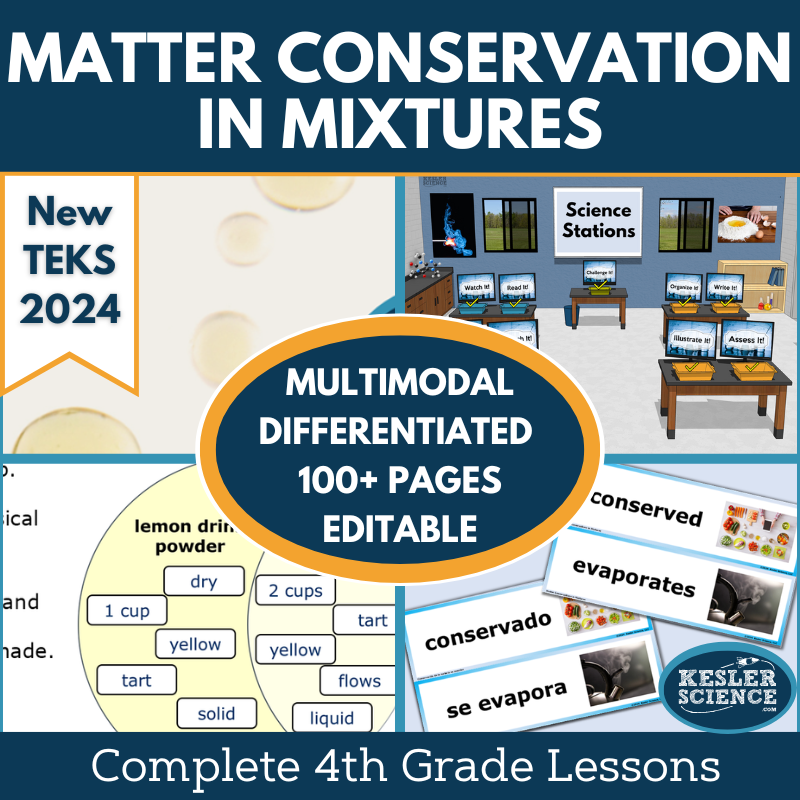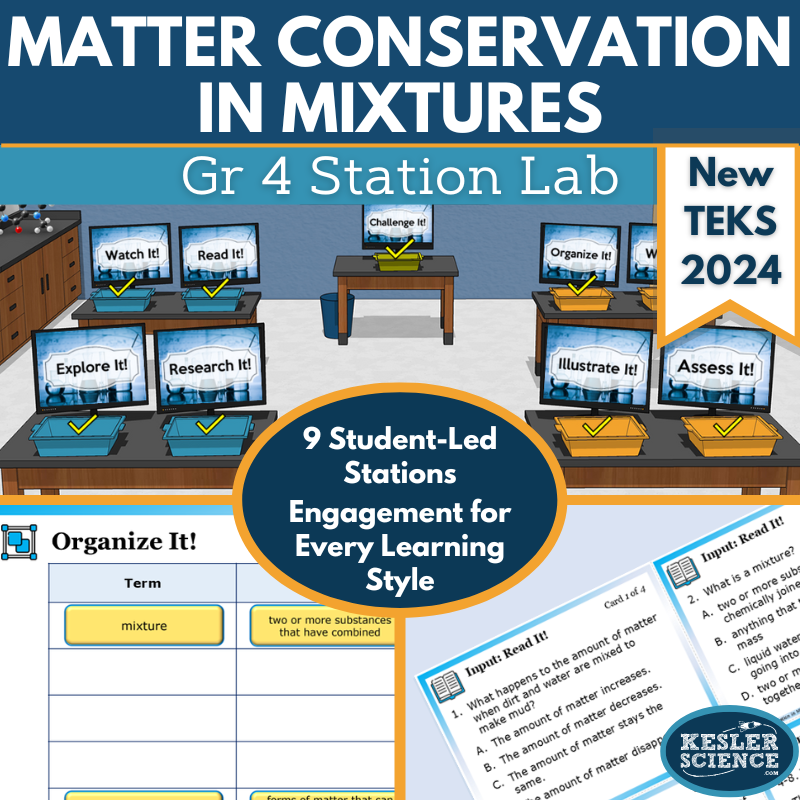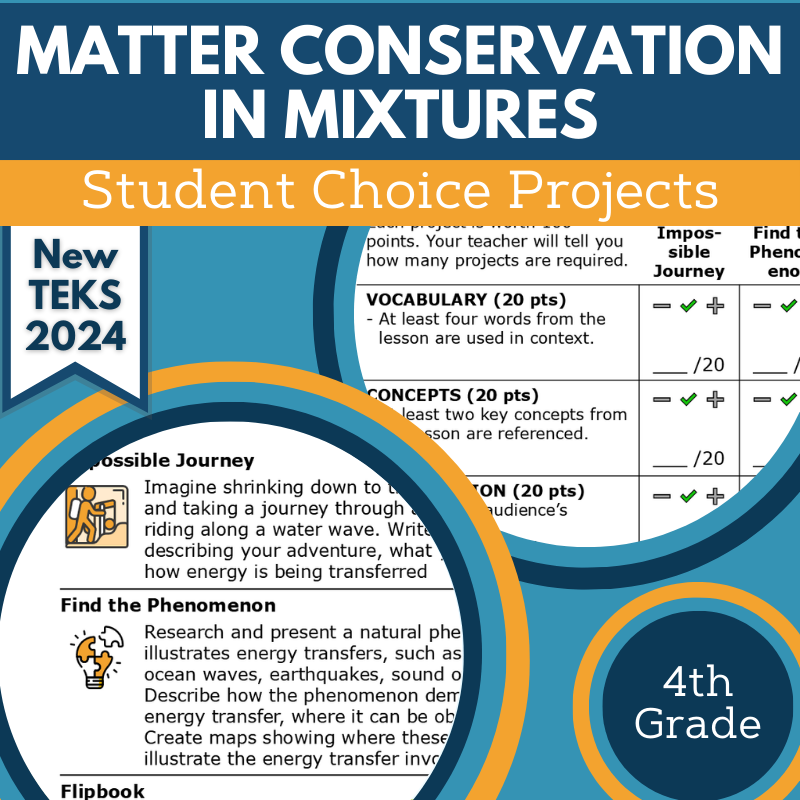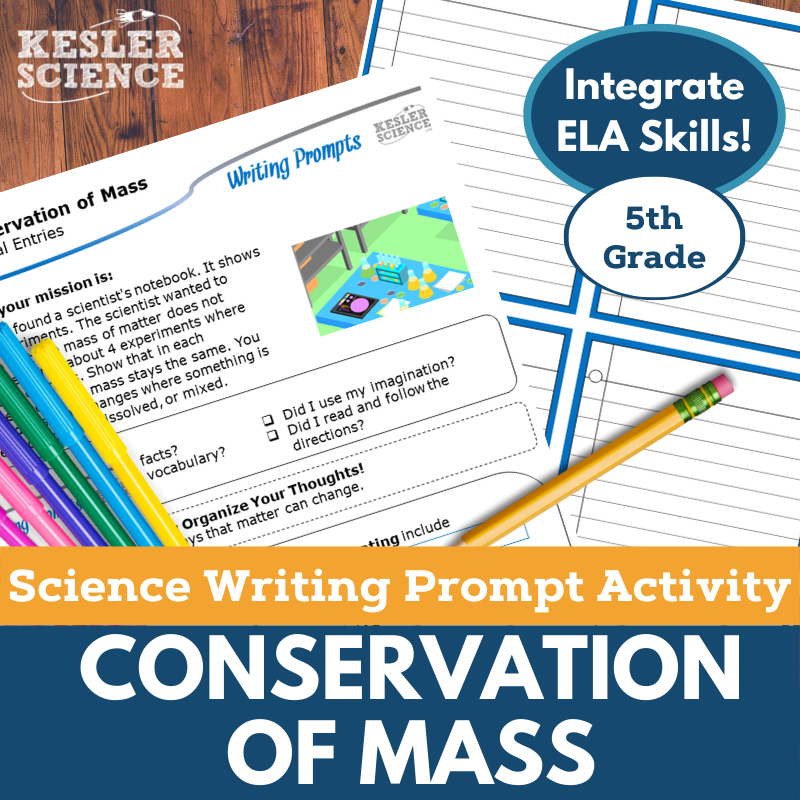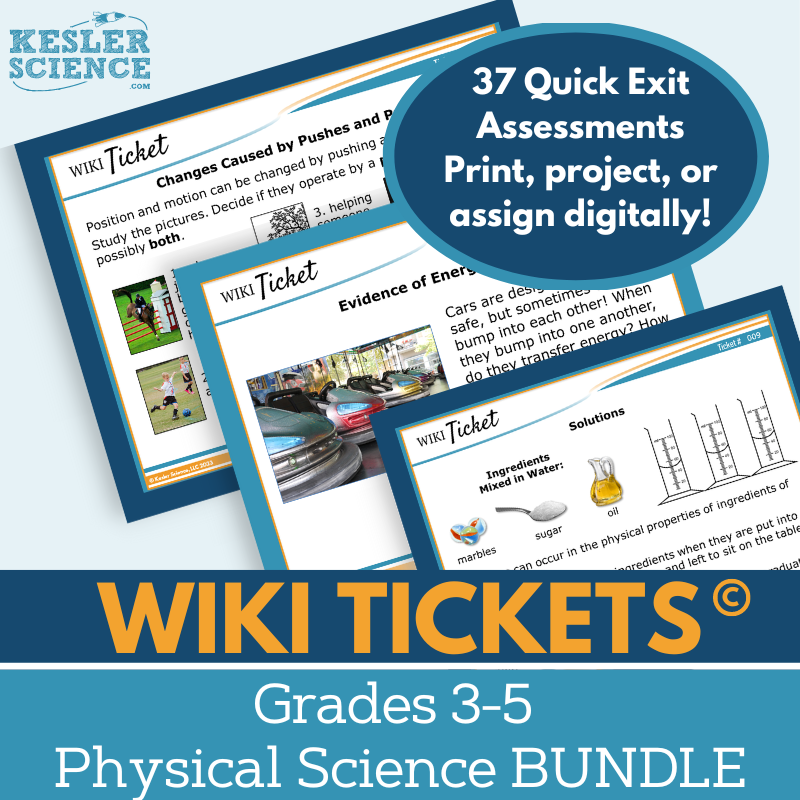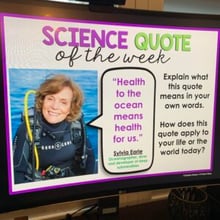Matter Conservation in Mixtures Activities for 4th Grade Science
This 5E lesson, aligned with TEKS 4.6C, teaches 4th grade students about the conservation of matter in mixtures like soil and water or oil and water. The resources below will give students a comprehensive understanding of conservation of matter in mixtures. All of the following materials are also included in the Kesler Science Membership.
This 5E Lesson teaches 4th grade students about the conservation of matter in mixtures like soil and water or oil and water. Aligned with TEKS 4.6C, it includes editable PowerPoints, worksheets, assessments, and student-choice projects. The lesson promotes differentiated, student-led learning, and requires minimal prep, offering both digital and printable formats.
The unit begins with engaging word wall cards and a class activity to address key concepts. In the Exploration phase, students participate in a station lab with nine multimodal learning stations, such as reading passages, videos, and hands-on demos, to investigate the mass of mixtures. Output stations allow students to demonstrate understanding through activities like sorting, writing, and illustrating. A bonus “Challenge It!” station provides enrichment for early finishers.
Explanation includes editable PowerPoints, interactive notebooks in English and Spanish, and note-taking templates. Students extend their learning with student-choice projects and are assessed with STAAR 2.0-aligned questions. The lesson is flexible for in-class or virtual use, supporting various learning needs.
This 5E Lesson teaches 4th grade students about the conservation of matter in mixtures like soil and water or oil and water. Aligned with TEKS 4.6C, it includes editable PowerPoints, worksheets, assessments, and student-choice projects. The lesson promotes differentiated, student-led learning, and requires minimal prep, offering both digital and printable formats.
The unit begins with engaging word wall cards and a class activity to address key concepts. In the Exploration phase, students participate in a station lab with nine multimodal learning stations, such as reading passages, videos, and hands-on demos, to investigate the mass of mixtures. Output stations allow students to demonstrate understanding through activities like sorting, writing, and illustrating. A bonus “Challenge It!” station provides enrichment for early finishers.
Explanation includes editable PowerPoints, interactive notebooks in English and Spanish, and note-taking templates. Students extend their learning with student-choice projects and are assessed with STAAR 2.0-aligned questions. The lesson is flexible for in-class or virtual use, supporting various learning needs.
This modular, student-led station lab on conservation of matter aligns with the 2021 TEKS 4.6C standard for 4th grade. It helps students explore how matter is conserved when mixtures are formed, providing an engaging and interactive physical science lesson. With nine differentiated stations, this lesson promotes personalized learning, allowing students to work independently or in small groups with minimal teacher direction. The materials include signage, resources, and task cards, and may require a few common lab supplies.
The stations include activities like "Explore It!" where students apply concepts through digital tools, "Watch It!" where they watch a video and answer questions, "Read It!" which includes a passage about mud pies with vocabulary exercises, and "Research It!" where they analyze mixtures like oil and water. Output stations include "Organize It!" where students manipulate objects or digital images, "Illustrate It!" for drawing models of physical properties in mixtures, and "Write It!" for short-answer prompts. An assessment station helps students demonstrate their understanding of matter conservation, and a bonus station offers extension activities for early finishers.
This resource can be used in both in-person and virtual learning environments.
This modular, student-led station lab on conservation of matter aligns with the 2021 TEKS 4.6C standard for 4th grade. It helps students explore how matter is conserved when mixtures are formed, providing an engaging and interactive physical science lesson. With nine differentiated stations, this lesson promotes personalized learning, allowing students to work independently or in small groups with minimal teacher direction. The materials include signage, resources, and task cards, and may require a few common lab supplies.
The stations include activities like "Explore It!" where students apply concepts through digital tools, "Watch It!" where they watch a video and answer questions, "Read It!" which includes a passage about mud pies with vocabulary exercises, and "Research It!" where they analyze mixtures like oil and water. Output stations include "Organize It!" where students manipulate objects or digital images, "Illustrate It!" for drawing models of physical properties in mixtures, and "Write It!" for short-answer prompts. An assessment station helps students demonstrate their understanding of matter conservation, and a bonus station offers extension activities for early finishers.
This resource can be used in both in-person and virtual learning environments.
The Matter Conservation in Mixtures Student Choice Projects align with the 2021 TEKS standard 4.6C and give 4th graders the option to select a project that suits their preferred output style. The project page includes six different student-led options along with a “design your own” project. An editable rubric supports assessment by teachers, peers, or the students themselves.
The projects are flexible and cater to different learning needs. Teachers can modify the rubric for grading, and there are both modified and advanced project options to accommodate students needing remediation or a challenge. These multimodal projects allow students to showcase their understanding in creative ways.
The resources include a project choice board, teacher directions, and an editable rubric. Standard classroom supplies like paper, markers, and scissors are typically required, with many projects also offering digital completion options.
The Matter Conservation in Mixtures Student Choice Projects align with the 2021 TEKS standard 4.6C and give 4th graders the option to select a project that suits their preferred output style. The project page includes six different student-led options along with a “design your own” project. An editable rubric supports assessment by teachers, peers, or the students themselves.
The projects are flexible and cater to different learning needs. Teachers can modify the rubric for grading, and there are both modified and advanced project options to accommodate students needing remediation or a challenge. These multimodal projects allow students to showcase their understanding in creative ways.
The resources include a project choice board, teacher directions, and an editable rubric. Standard classroom supplies like paper, markers, and scissors are typically required, with many projects also offering digital completion options.
The Conservation of Mass Science and ELA Integrated Writing Activity helps students explore changes in matter through journal entries. This activity, aligned with the 5-PS1-2 standard, encourages students to measure and graph quantities, demonstrating that matter’s total weight remains constant during heating, cooling, or mixing substances. Ideal for both in-person and virtual learning, it promotes engagement and enhances writing skills.
The resource includes teacher directions, answer guides, project ideas, rubrics, and handouts in various formats—projection, full-sized, half-sheet, and a digital interactive version for Google Slides or PowerPoint. The activity works for cross-curricular integration, pre-test assessment, student projects, differentiation, or enrichment, and can be used for extra credit, make-up work, or TELPAS samples. It’s a creative, low-prep, and flexible tool for science reasoning and literacy.
The Conservation of Mass Science and ELA Integrated Writing Activity helps students explore changes in matter through journal entries. This activity, aligned with the 5-PS1-2 standard, encourages students to measure and graph quantities, demonstrating that matter’s total weight remains constant during heating, cooling, or mixing substances. Ideal for both in-person and virtual learning, it promotes engagement and enhances writing skills.
The resource includes teacher directions, answer guides, project ideas, rubrics, and handouts in various formats—projection, full-sized, half-sheet, and a digital interactive version for Google Slides or PowerPoint. The activity works for cross-curricular integration, pre-test assessment, student projects, differentiation, or enrichment, and can be used for extra credit, make-up work, or TELPAS samples. It’s a creative, low-prep, and flexible tool for science reasoning and literacy.
The WIKI Tickets© Physical Science Set offers 37 formative assessments for 3rd–5th grade science, designed to check student understanding in an engaging and colorful way. Each topic comes with five formats: a full-screen display for projection, three handout versions (full, split, and quarter-page sizes), and a digital interactive version compatible with PowerPoint and Google Slides.
Aligned with NGSS and TEKS standards for upper elementary science, this set covers various topics, including changes caused by pushes and pulls, energy transfer, forms of energy, properties of matter, and force interactions. Some topics feature multiple assessments, and each set includes a bonus table of contents for easy alignment reference.
These assessments are suitable for both in-person and virtual learning, allowing students to engage with the material on campus or remotely. WIKI Tickets© can be used as exit tickets, bellringers, or to check understanding at any time. Whether projected on a screen, printed as handouts, or assigned digitally, they provide versatile tools for gauging student progress.
The WIKI Tickets© Physical Science Set offers 37 formative assessments for 3rd–5th grade science, designed to check student understanding in an engaging and colorful way. Each topic comes with five formats: a full-screen display for projection, three handout versions (full, split, and quarter-page sizes), and a digital interactive version compatible with PowerPoint and Google Slides.
Aligned with NGSS and TEKS standards for upper elementary science, this set covers various topics, including changes caused by pushes and pulls, energy transfer, forms of energy, properties of matter, and force interactions. Some topics feature multiple assessments, and each set includes a bonus table of contents for easy alignment reference.
These assessments are suitable for both in-person and virtual learning, allowing students to engage with the material on campus or remotely. WIKI Tickets© can be used as exit tickets, bellringers, or to check understanding at any time. Whether projected on a screen, printed as handouts, or assigned digitally, they provide versatile tools for gauging student progress.
Year-Round Resources
These year-round activities will increase your students' understanding of many middle school science topics. All of these activities are also included in the Kesler Science Membership.
Visual Data & Graphing
You're not alone if your students struggle with understanding graphs, charts, and tables. It's a skill that takes an enormous amount of practice. This resource will help students build a strong foundation in analyzing data and creating their own data visualizations.
Bell Ringers and Warm-Ups
These middle school science bell ringers are an excellent way to engage your students as soon as they walk into your classroom. This comprehensive FULL YEAR resource includes everything you need to start off each science class with an interesting warm-up activity.
Review Board Games
Each game board has been carefully designed to keep students engaged. There are 10 different action spaces on each board and dozens of question cards. All of the actions are related to science concepts and keep the students motivated throughout the game.
Each game is ready to play. Simply print out the board and the cards and let the students enjoy reviewing nine different units.
Essential Questions and Standards
Below are the essential questions and standards associated with the lessons and activities included in the atoms unit. This topic is only one of more than 100 middle school science topics included in the Kesler Science Membership.
-
How can you demonstrate that matter is conserved when mixtures are formed?
-
TEKS Science - 4.6C Matter Conservation in Mixtures
Kesler Science Membership
Imagine never having to search for another middle school science lesson again. The membership gives you access to ALL of the Kesler Science products in one place (Yes, including everything above).
Say goodbye to long hours of lesson prep.

